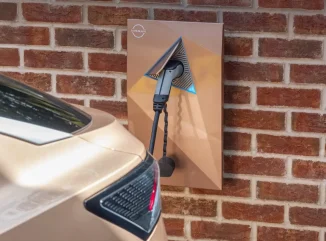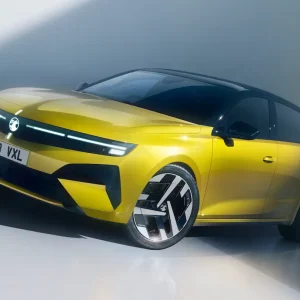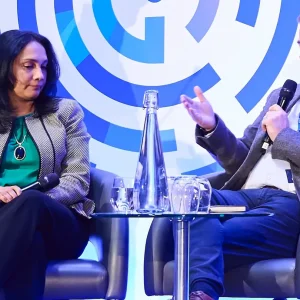
A new vehicle-to-grid EV charging system has been revealed by Nissan.
The company says the system, which will launch in the UK in 2026, is designed to make the technology more affordable.
Vehicle-to-grid (V2G) systems allow power from EV batteries, while the EV is plugged into a charger, to be used to power a building, such as the driver’s home or a company’s office, or alternatively to be sold back to the grid.
According to Nissan, one of the difficulties with V2G is the need to convert the DC power used by EVs into the AC power needed by the grid.
It says that where previous V2G systems have seen this conversion carried out in expensive off-board chargers, its new system sees the conversion take place in the vehicle itself, by effectively reversing the process by which power from AC chargers is converted into DC power to drive the vehicle.
The development of the new system follows around 40 V2G pilot projects carried out around the world by Nissan over the past decade.
Following a year-long project at the University of Nottingham, Nissan says it has become the first car manufacturer to gain G99 Grid code certification, needed for power from its vehicles to be supplied into the UK grid.
Drivers will be able to control the V2G function via an app – allowing them to, for instance, set a minimum charge level to be retained in the vehicle’s battery at any time.
Nissan claims the system could cut the annual cost of powering an EV by 50%, and reduce net CO2 emissions from charging by 30% per year, per EV for the average UK household.
It says it is aiming to offer the required in-vehicle bi-directional charger at a price comparable to a currently-available mono-directional charger.
Although the launch is focused on consumers charging at home, fleet applications are expected to follow.
Speaking to Business Car at the unveiling of the system, Soufiane El Khomri, Nissan’s energy business unit director, said: “Fleet is definitely part of our strategy. We did many [V2G] experiments in the past with fleet companies.
“In terms of rollout, it’s a bit too early to say when, but it will follow the launch of V2G [to consumers]. Why? Because within fleet we have multiple drivers, you have large fleets, leasing companies where the owner may not be the driver or they might not be in contact, so we have different cases.
“What we are trying to do is identify all the cases, to find the specifics of each case, and then the plan will be developed.”
The UK V2G trial was partly funded by the UK Government’s Advanced Propulsion Centre, and the project also involves EDF subsidiary Dreev, and EV charging company Enovates, which developed the associated wall box.
The wall box acts as the system hub, sending and receiving information on energy demand and supply from the Dreev cloud, and directing the car to take on or discharge electricity.
As well as benefiting its customers, Nissan says the rollout of V2G technology can also play a role in integrating and increasing the mix of renewables into the wider grid, by storing electricity generated by wind or solar, and directing it back into the grid when needed, with a resulting reduction in dependency on fossil fuels.





